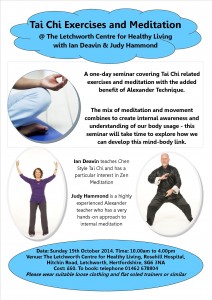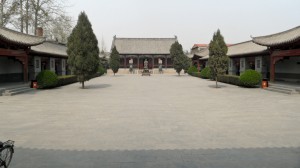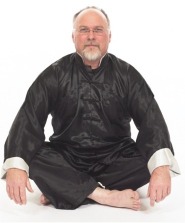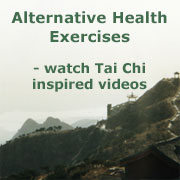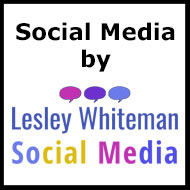Here’s an idea – think of yourself as a committee – and your body and your mind and your spirit
as sub-committees.
This structure is like a team or a shoal of fish/flock of birds – but unlike any of these you do not
have the option to “drop” one of the team – they are with you for life – so the only option is to
grow the team from within. You cannot rely on a few star players you must get the whole team
home. So you focus instead on supporting the weak players, guiding them and giving them
every opportunity to grow and learn how to co-ordinate with the rest of the team – how to work
in sync, in rhythm and in the same direction as the rest – unless they do then you remain
unconnected and your energy is scattered like a tug-o-war team who doesn’t practice.
So you invest in loss – because that gives you the best opportunity for the feedback which can
show you what is not working and why and allow you to work out how to fix it.
It is the power of teamwork that generates Chi and the skill gained from consistent practice –
your Kung Fu – that enables us to develop it.
The forms and the exercise and the repetition – the experimentation, the mindful observation,
the push hands and the partner work are all tools along the way to help our team grow. So as
one player gets weaker perhaps with old age or illness – the team structure and operation gets
stronger to compensate – the linkage gets more resilient and tougher, the demands on each
player become less as the structure becomes more integrated and focused, and more flexible to
external forces. In a similar way that if you have a chain with weak links there would be no point
in further strengthening the already strong links – you instead first rebuild the weak links to
make the whole chain strong.
So in Tai Chi we work on our bodies and our physical systems using exercises that give us the
opportunity to develop our tissues and co-ordination – which indirectly means that we also work
on our mind and spirit. We work on balance, sensitivity, co-ordination, elasticity, timing,
endurance, connection – and on understanding the experiences of those other Tai Chi players
who choose to pass on their experiences.
Like a good team manager our mind is just one player – we can use the conscious intellect in
observing, researching, learning, nudging, encouraging, cajoling, threatening and nurturing. Too
strong and it takes over and micro-manages – it does not allow our subconscious to work and
so we do not become “natural” in our Tai Chi – but remain robotic and uncoordinated – external
– always catching up, always too late however fast we try to move, always with weaknesses
easily seen and exploited by other Tai chi practitioners who have got their team together.
Worse – over use of the intellect can send us off on many a wild goose chase – thinking that we
know what we are doing – and actually not. This over use can hold us back in our progress by
sending us off in many wrong directions. The intellect is a powerful team player when it works
correctly – indeed it may be the chairman of the board sometimes but it is not the managing
director and all the other directors as well.
For example the intellect can create virtual models, visualisations, exercises and patterns to
help in developing the body and spirit. Just as mine created this article which attempts to
transmit part of my intellectual model and actually therefore forms part of the model itself.
Our spirit plays in the team too – too strong and it takes over pushing us too hard and
demanding we win all the time or just as bad perhaps defending us when not necessary – too
weak and we just take the easy road or don’t even try at all. Too much spirituality and we can
get lost in the “airy-fairyness” of it all and lose track of the real world. Learning when and how to
support the team – when to lead and when to take a back seat is vital for the spirit.
In a very real sense we are the whole committee – from our microbes to our concepts – from
our cells to our structural tensegrity and our conscious/unconscious learning and control
systems. Our outward presentation and inner experience are a complete melding of all these
elements of ourselves – we are the “group think” of the committee/team – our mitochondria,
memories, religious beliefs and physical abilities etc. – if there is inner conflict then it is like
ministers briefing against their own government – the whole structure begins to break down and
quite quickly even the house keeping (civil service) is affected – so we are constantly
negotiating consensus and to stay “on message”.
If we have too strong a leader i.e. any one member controls the committee for too long then the
structure becomes unbalanced. So at all levels studying Tai Chi becomes a quest for balance
and how to allow change from one mode to another – as sometimes one aspect predominates
and then steps down and takes a passive role. We learn to become congruent and to trust
ourselves – sure we still make mistakes – hopefully less as we go on – but we retain our
personal integrity.
So if we allow ourselves to “relax and sink” then we can let the committee work properly and
ultimately more powerfully as a team than as a loose collection of individual parts each fighting
to dominate.
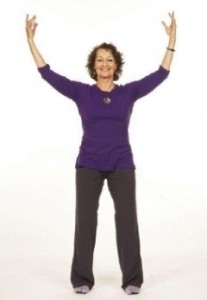 My wonderful friend and colleague Judy Hammond has recently posted her new website movingmindfully.com with some lovely ideas and imagry. Judy and I have co-presented a number of Tai Chi / Moving Mindfully seminars in the past 2 or 3 years on subjects as diverse as falls prevention, spiralling, meditation and movement – she is an inspiration in my work and to many students as well as great fun to work with!
My wonderful friend and colleague Judy Hammond has recently posted her new website movingmindfully.com with some lovely ideas and imagry. Judy and I have co-presented a number of Tai Chi / Moving Mindfully seminars in the past 2 or 3 years on subjects as diverse as falls prevention, spiralling, meditation and movement – she is an inspiration in my work and to many students as well as great fun to work with!


